Local search ranking matters to businesses with a local customer base. But searches for ‘…near me’ aren’t just about location. They’re also about time and need. Increasingly, searches that contain this search term are from prospects with purchase intent, who have passed the evaluation stage and are looking for the best local option so they can go there and buy. If that sounds like something you should be optimizing for, do we have a blog post for you.
We’ll look at how the growth of mobile, GPS and local search have driven an explosion in web searches by people who are looking for something they can buy now, today. And we’ll talk about the most important elements to get right if you want your local search results to shine. Let’s start with just how much, and how fast, searches like this have grown.
‘Near me’ searches are growing rapidly
‘X near me’ searches are among the fastest-growing searches in the world. Growth in the mid-2010s was fast as mobile-oriented search marketing and consumer habits caught up with a populace who were (and are) constant mobile internet users. However, they’re growing rapidly now too. Here’s Google Trends’ view on the last five years:

(Note: Google Trends uses a percentage scale to gauge interest rather than raw search volume numbers.)
This growth is part of a trend toward using search as part of normal life, rather than sitting down at a computer to ‘do research.’ You can see that by looking at Trends data for ‘X near me tonight’:

(I’m not sure what was happening from July 2-8 2017, but it got a lot of attention on Google.)
These searches are often for consumer-level spending: people looking for somewhere to eat, a bar, a cinema, a haircut or an electronics store where they can buy something more or less immediately. Searches for food and events account for a large swath of this increase in volume. But the same trend doesn’t just apply to professional services — it’s actually even clearer.
Check out the graph for ‘attorney near me’ in the US over the last five years:

The pandemic shows up as a dip-and-correct interruption to the general upward trend in these figures, but the overall picture is clear enough: organic search is about two thirds mobile. A 2018 study found that 82% of respondents had made a ‘near me’ search on their smartphone over the course of a single week.
Local search, predominantly on mobile, is increasingly the last step in the customer journey before they visit someone’s office, practice or store and spend some money. This is an enormous opportunity, particularly if you’re a ‘relationship business’ like an attorney or a physical therapist, where it’s much easier to convert someone to a long-term customer than it is to get them through the door in the first place.
‘Near me’ searches indicate immediate need, purchase intent
Marketers talk about TOFU and BOFU actions and customer behaviors. That’s Top-Of-FUnnel and Bottom-of-FUnnel; TOFU might be ‘how much should I spend for a deep carpet clean?’ At this stage, people are aware that the service exists and is valuable to them, but they’re considering and evaluating. They need education, guidance, support, nurturing — all of which sounds time-consuming and expensive, because it is.
Down at the BOFU (bottom of the funnel, remember) is ‘deep carpet clean near me.’ These searchers have an idea of what’s on offer and they’re ready to buy. It’s not limited to short-term consumer decisions like where to get takeout or car tires: it’s a part of the customer journey that’s always been there, moving online.
Between 2015 and 2017 searches for ‘buy X near me’ grew 500%, and as we’ve seen, the growth applies to business and professional searches purchases too. In 2021, Google shared a report on customer decision-making that included what the authors called a ‘surprising insight’: ‘The power of showing up’ meant that ‘simply being present in moments of deliberation can be enough to win or retain consumer preference.’ (By ‘moments of deliberation,’ Google means those times when people’s searches are part of a decision-making process. They’re telling us the value of being found when a choice is being made.)
Being findable when potential customers are looking for ‘X near me’ can be enough to tip the balance in your favor and net you genuinely-interested prospects with immediate purchase intent.
The pandemic moved the needle too: 35% more conversions happened through websites and phone calls, and custom for local businesses rose 11% — with 82% of those surveyed saying they planned to continue buying more locally after the pandemic was over.
Top near me searches
What are people searching for in local search?
The most-searched categories are:
- Food: 84%
- Entertainment: 56%
- Banking: 50%
- Apparel: 41%
- Personal care: 38%
Anything that requires or benefits from a face-to-face interaction will get ‘near me’ searches. That includes professional and business services such as lawyers and dentists, as well as service-based businesses like plumbers, water remediation, carpet and window cleaning and other home and office maintenance offerings.
It also applies to work that theoretically could be done remotely. Many people feel more trust and confidence in someone they’ve met personally, so consultants and coaches should be looking at local search even as they build businesses with a non-local, online element too.
Optimizing for ‘near me’ searches
For many local businesses, or businesses with a local element, ‘near me’ searches are an opportunity. It’s often a missed opportunity: Bill4Time, a marketing and business blog aimed at attorneys, says lawyers’ local search profiles are typically ‘lopsided (e.g. lawyers share lots of content on Avvo but neglect Google reviews… local directories and social media profiles).’ Whether for professional, personal, or business services, most businesses are leaving money on the table by not having a local search profile that’s up to scratch.
Here are the main boxes businesses should be ticking to ace local search.
1: Google My Business
Google My Business (GMB) is the top search ranking factor for local businesses:
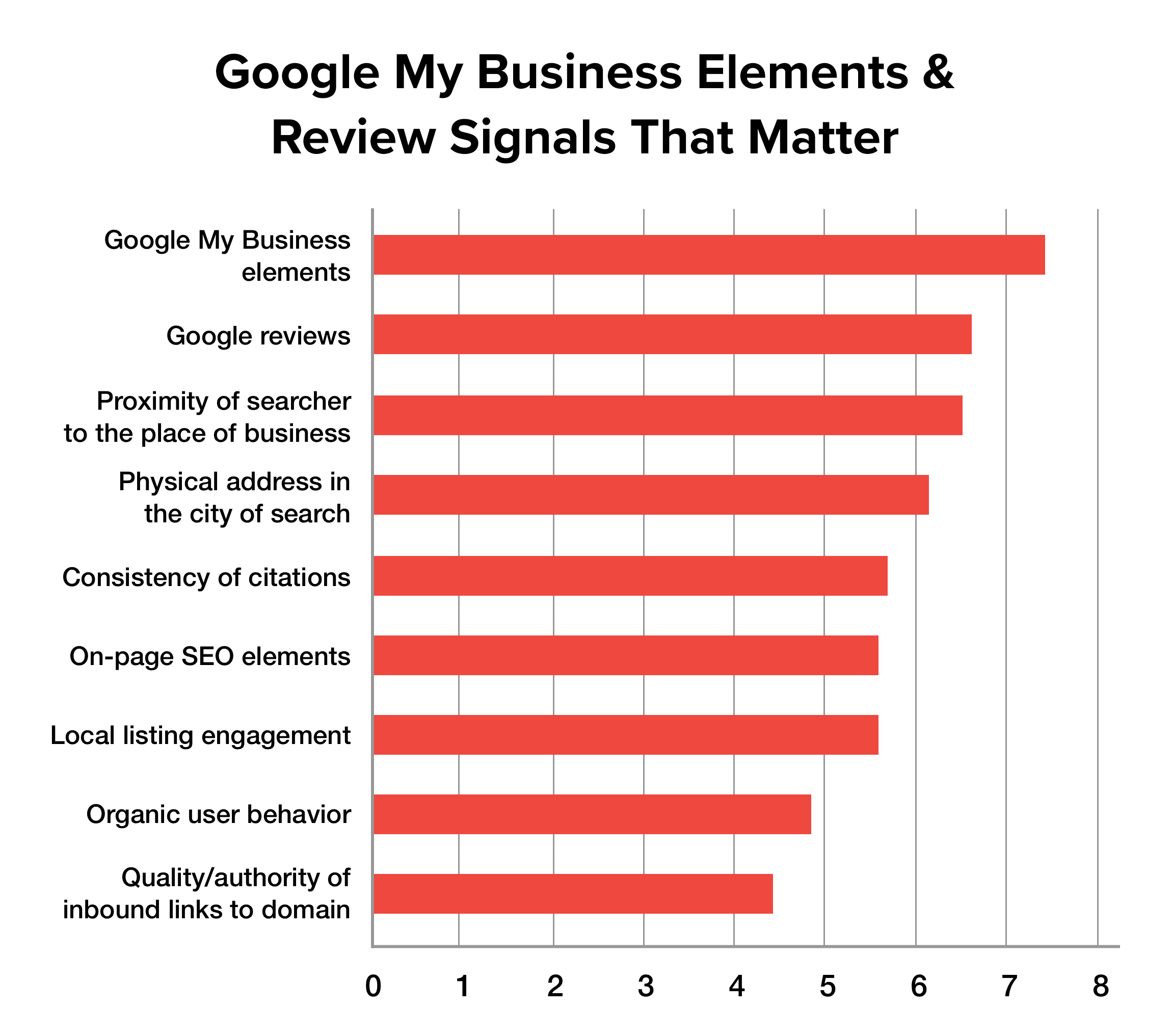
Around 64% of consumers use it to find business addresses or phone numbers. So GMB is important. GMB can be used to display reviews, customers can leave reviews directly on it, you can take bookings through it, and it’s increasingly where searches end. What stops many local businesses from having great GMB listings?
Mostly it’s a lack of time and expertise. A great listing might include some photos and reviews, an associated Maps listing so you’re easy to find physically, and accurate, up-to-date company information, including the Name, Address, and Phone number (NAP) information that local directories are so picky about. Google treats having accurate and consistent NAPs across local link sources as a rank factor, but these need to be pedantically precise. If you’re going to do them yourself, I recommend you copy them from a spreadsheet exactly the same way every time.
2: Local Pack
The Local Pack is the three listings displayed under the map in local search results. It looks like this:
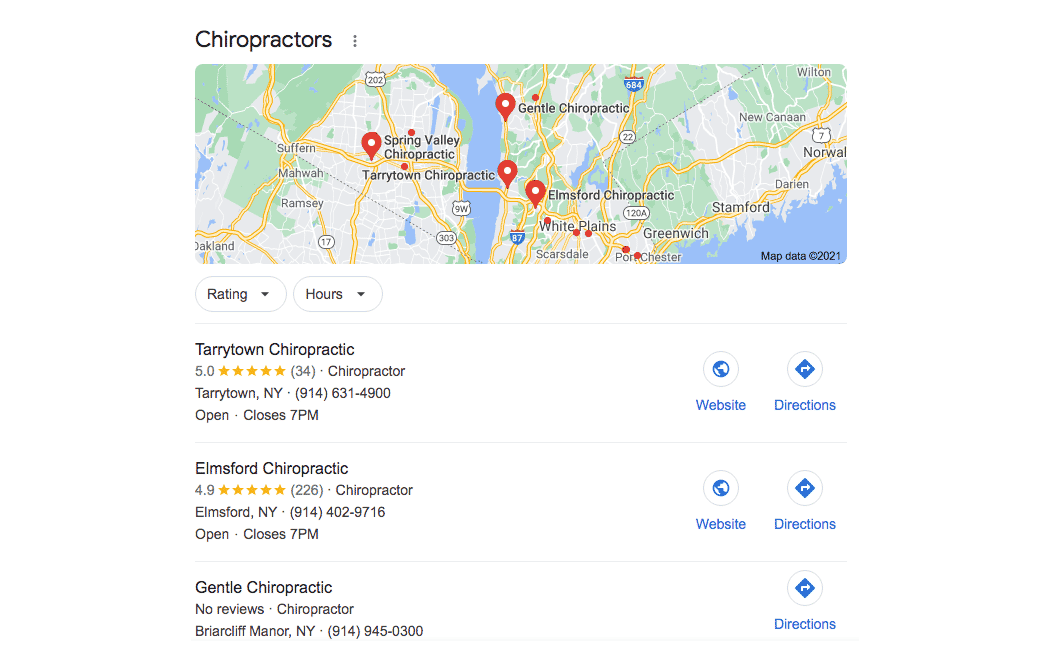
These three will statistically absorb the majority of local searchers for ‘chiropractor near me’ (my search terms). Google-specific elements, chiefly GMB, are key to Local Pack ranking:
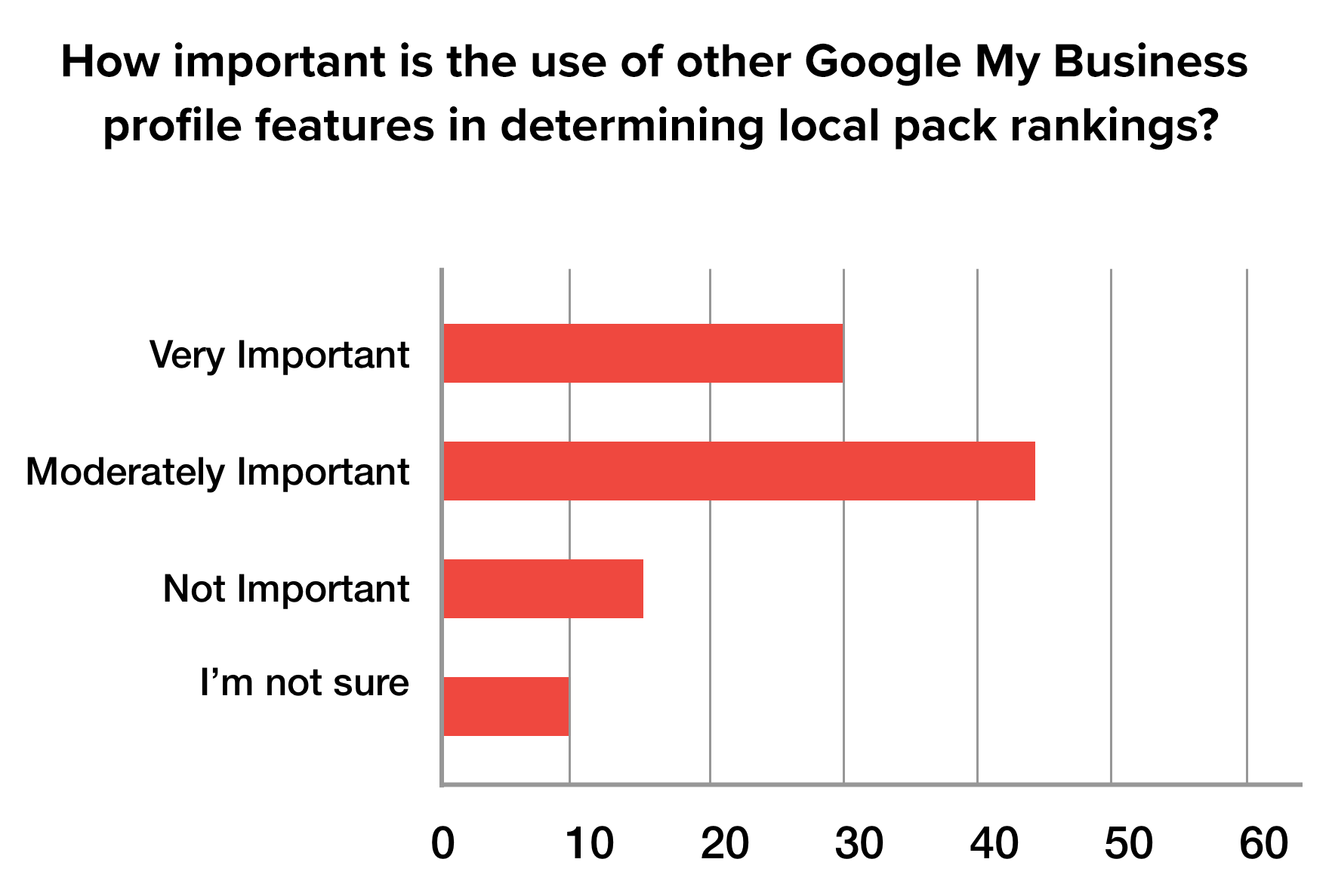
Google attributes Local Pack ranking to relevance, distance, and prominence; this means precise, accurate location information and a clear description of what your business does will go a long way.
3: Schema markup
Schema markup is essentially writing parts of your website in the language of search engines, using a specialized vocabulary that tells Google, ‘list this website in response to searches for this.’ That’s what a lot of SEO is meant to do, but in most cases, we’re working with hints. Schema markup is direct instructions. In the words of Ryan McKeller, ‘no matter how smart we think Google is, it still struggles to make sense of what a webpage is actually about. That’s why there’s schema markup. It’s a form of metadata added to a website that tells the algorithm what it is drawing and how to categorize it.’
Implementing Schema markup is a relatively technical job. Most CMSs have tools you can use — there are WordPress plugins, for instance. But when it comes to adding code to your site, it’s best to check it by hand. Even the best plugins can get details wrong, and the results can cost you customers and revenue.
4: Local backlinks, local anchor text
Local backlinks are a major ranking factor. Google uses them to figure out where you are, then serve your site to local searchers, and proximity to searcher is the second-biggest search ranking factor. Some local backlinks are easy to get — local directory listings are a good source of local backlinks with high domain authority, and many customers use them to search for local businesses too:
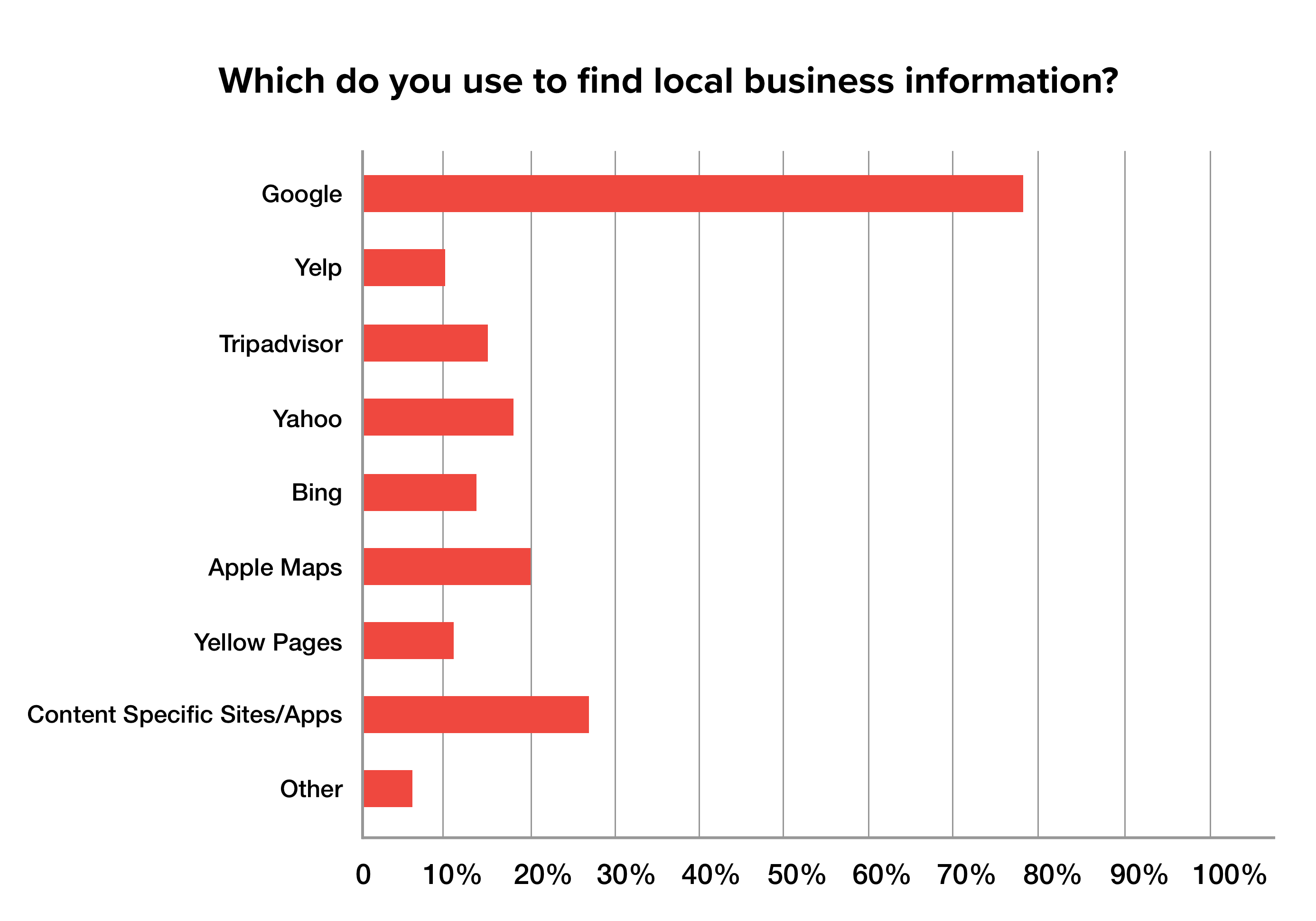
Local news and community sites can also be a source of links. Over time, businesses should seek to develop a content strategy that includes links with location in the anchor text, so that local press interviews with the owner include links with text like ‘Jake Goodlaw, owner of Murfreesboro’s Goodlaw Dentistry,’ clearly establishing a real local footprint. However, creating and placing the appropriate content to achieve this end can be difficult and time-consuming for local businesses.
5: Multi-location? Create pages for each location
Even if your business has only two or three locations within the same town or across a couple of nearby municipalities, it still makes sense to optimize for those specific locations. This is even more true if you have multiple locations in different cities. ‘Near me’ searches are managed by algorithms that Google keeps quiet about, but you’re definitely going to lose out on Palo Alto customers if you only have one page for the “Bay Area”.
Don’t use Virtual Office locations, though. Google forbids it and will delist you if it finds out! Only list yourself as having a presence somewhere if you have an office there that’s staffed during business hours.
6: Mobile
By now, this point should have become obvious: websites and search need to be optimized for mobile. This is a relatively easy win:
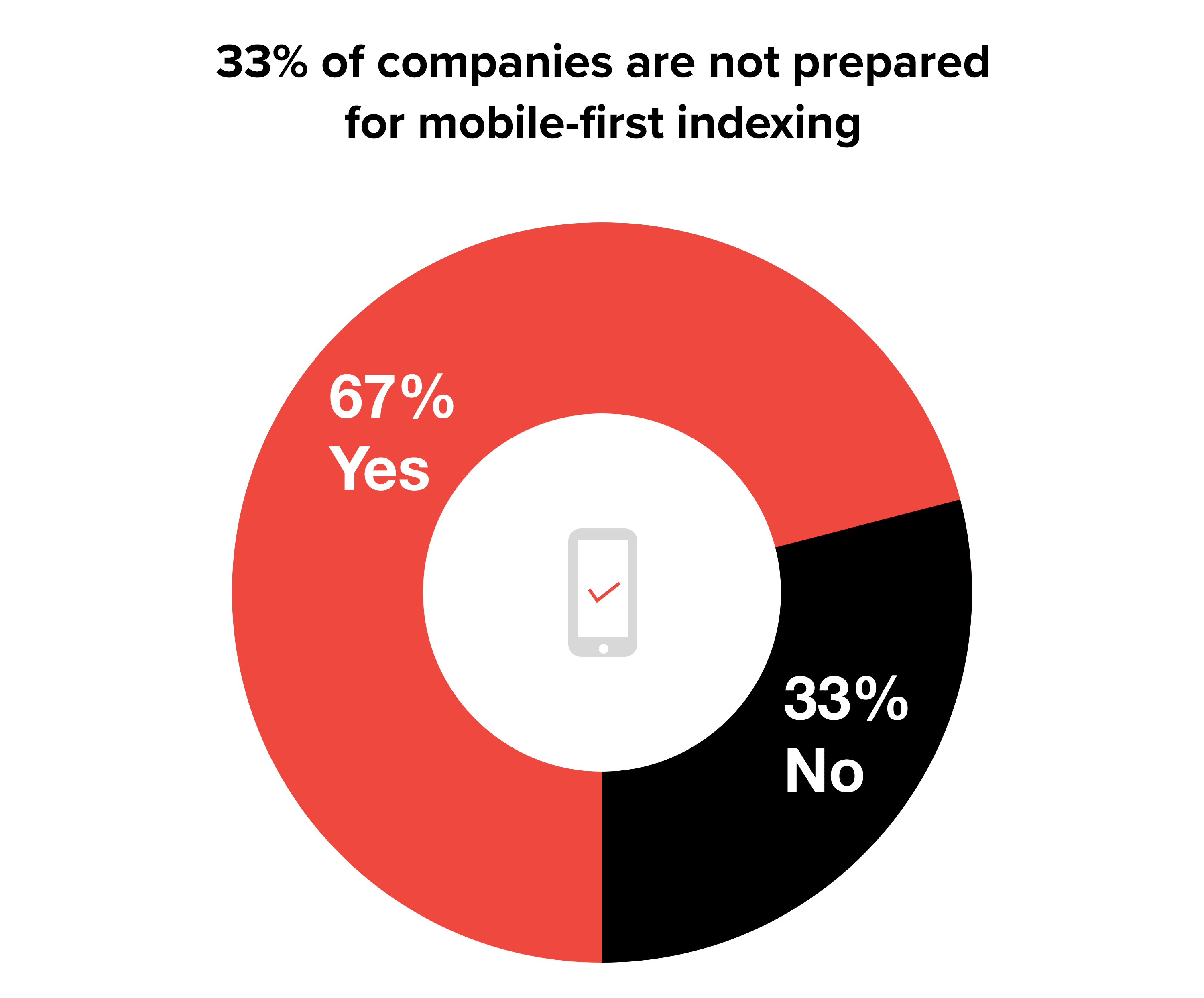
This goes a lot deeper than just having a ‘responsive’ website theme. Mobile-first indexing has been Google’s default since 2019, meaning that Google treats the mobile experience as the priority when it ranks sites, and the desktop site as secondary. Mobile sites with thinner content, or sites that use methods like lazy loading that require user interaction to display content elements, tended to suffer from this update. Making a local company’s site compliant with mobile-first indexing is mainly a matter of following a few simple rules, but they assume some technical expertise and as always, the devil’s in the details…
7: Local focus in content
Websites live and die by their content. Content is how you get found and get ranked. It’s how prospects evaluate your business and decide whether to click through or pick up the phone. And it’s what Google uses to figure out what you’re all about.
All that means your content should express the fact that you’re a local business. The days when you did that by packing the text with keywords are (thankfully) long over, but your content strategy should be keyed to the locations where you do business. Over time, this local-centric content will earn you local links too. As always, don’t forget that content means video as well as blog posts, and that photos of nearby places are an opportunity to use image alt tags to mark the site for a location.
8: Got reviews?
People care about reviews a lot. Over 50% of consumers won’t use a business that has less than a 4-star rating, and Google excludes such businesses from search results for terms that include the word ‘best.’
You should have a strategy to maximize the number of positive reviews you can field in your GMB, including soliciting reviews from satisfied customers. Remember that people don’t just look at star ratings; many prospects will actually read your reviews, so the more detailed your positive reviews are, the more likely they are to reassure and encourage people who have the same problems, anxieties and hopes as the reviewer. That’s another reason why a ‘wide review base’ is desirable; you want input from a range of customers, about a range of the services you provide.
9: Think text — not PDFs
Too many local websites offer crucial information in formats that search engines can’t read. A PDF is an image file, so Google doesn’t see it as text and you lose the ‘search juice’ you should be getting from that relevant content.
Worse, most of your users can’t read it either. Downloading a PDF of a services list, price list, menu, or another resource on a mobile device is a nightmare of pinch-and-zoom inaccuracy, difficult to read and impossible to search inside. In 2021, it makes you look amateurish. You can afford it if you’re a mom-and-pop restaurant, living off your regulars with no plans to expand. But if you’re reading this, that’s not you. Make all your resources available as mobile-friendly HTML pages.
10: Check your business history for seasonality
This is a pro tip: check your business for seasonal events. If you’re an etailer, that’s Thanksgiving, Black Friday, and Christmas. If you sell fireworks, you’ve probably noticed the Fourth of July. But other, less obvious seasonal effects can give you a line to your customers if you can spot them and take advantage of them.
Is there a particular time of year when new businesses open, needing tax advice? What time of year is ‘everyone suddenly needs a lawyer month?’ Is there a Frozen Shoulder October or a pre-summer personal grooming boom? If you can identify these things you can create content to match the reasons, not just the events, meaning you’ll match your customers’ concerns as well as their search terms.
Conclusion
Local search is more important than ever, and succeeding at it often requires more resources than local businesses can muster internally. The irony is that national or regional businesses often perform best in local search because they can afford internal teams to devote to ranking across their locations! But there’s plenty that local businesses can do to catch the eye of the customers that are out there, right now, searching for a lawyer, osteopath, or dentist — ‘near me.’ We’ve worked with local businesses to transform their online presence, including copy, content, and even auditing their code, as well as making sure all their Google assets are up to par.
Do you want to work with Judicious, Inc. on your local search performance?

